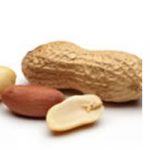What Foods Should I Avoid if I Have Latex Allergy?

Latex allergy is caused by proteins that occur naturally in raw latex preparations. There are at least 13 distinct proteins that have been identified and associated with latex sensitivities in health care workers, spina bifida patients, and children or adults within the general population, with most allergic patients reacting to multiple latex proteins that vary somewhat between these groups.
Several of the proteins in latex are active enzymes involved in defending the latex plant from microbial attacks. It’s not surprising to find plant defense with activities comparable to those found in latex in a wide variety of plants that include many common foods.
A number of these common plant defense proteins are potent allergens. The tendency of latex-sensitive individuals to express allergic reactions after ingestion of certain foods has been recognized for many years and laboratory studies have confirmed both the sources of the offending allergens and their relevance to the allergic condition.
Our immune systems recognize particular antigen structures as foreign without regard to the origin of these molecules. Close structural similarities between any two allergens from divergent sources can produce similar allergic reactions in sensitive patients, a term called cross-reactivity or cross-sensitization. Ingestion of some foods can produce allergic symptoms in patients sensitive to latex due to the presence of these cross-reactive protein allergens.
This association between latex sensitivity and food allergy is often referred to as the latex-fruit syndrome, although many vegetable foods have also been identified as having cross-reactions with latex proteins. The foods shown below have been linked allergenically to latex in published reports and are grouped based on high, moderate or low/undetermined degrees of association to latex or prevalence of allergic reactions. It is likely that other foods not yet identified also possess some allergenic similarities to latex.
High (4) Avocado, Banana, Chestnut, Kiwi
Moderate (7) Apple, Carrot, Celery. Melons, Papaya, Potato, Tomato
Low/undetermined (40) Apricot, Buckwheat, Cassava/Manioc, Castor bean, Cherry, Chick pea, Citrus fruits, Coconut, Cucumber, Dill, Eggplant/Aubergine, Fig, Goji berry/Wolfberry, Grape, Hazelnut, Indian jujube, Jackfruit, Lychee, Mango, Nectarine, Oregano, Passion fruit, Peach, Peanut, Pear, Peppers (Cayenne, Sweet/bell), Persimmon, Pineapple, Pumpkin, Rye, Sage, Strawberry, Shellfish, Soybean, Sunflower seed, Tobacco, Turnip, Walnut, Wheat, Zucchini
It is important to note that some of the foods listed above may not produce clinically important reactions in latex-sensitive individuals. However, recognition of the foods that are known to share some major or minor allergens with latex can help patients and their families minimize exposures to possible sources of offensive allergens and understand the risks associated with these foods in their diets.




